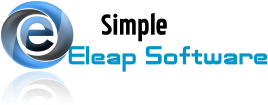5 Key Features Your LMS Should Have for Effective Training

In today’s rapidly evolving educational and corporate landscape, Learning Management Systems (LMS) play a pivotal role in facilitating effective training and education. LMS platforms are no longer limited to traditional classrooms; they’ve become a cornerstone for organizations and institutions looking to adapt to the digital age. However, not all LMS platforms are created equal. To ensure effective training, you need an LMS that offers certain essential features. In this blog post, we will explore the top 5 key features your LMS should have for effective training.
- User-Friendly Interface
One of the most critical features of an LMS is its user interface. An LMS with a user-friendly interface can significantly impact the overall learning experience. A cluttered, confusing, or non-intuitive interface can frustrate learners and discourage them from engaging with the platform.
A user-friendly interface should be easy to navigate, with clear menus and labels. It should provide a seamless and enjoyable experience for learners of all tech-savviness levels. Such an interface not only helps learners feel more comfortable but also reduces the learning curve, making it easier for them to access content, interact with their peers, and monitor their progress.
Take, for example, the widely popular LMS platform, Moodle. It features an intuitive user interface, making it easier for educators and learners to engage with course materials and monitor progress. It offers a consistent experience across devices, which leads to higher user satisfaction and effective training outcomes.
- Customization and Branding
Customization and branding are crucial features for organizations looking to make their LMS align with their unique goals and culture. A branded LMS not only looks and feels like an integral part of your organization but also reinforces your identity and values in the minds of your learners.
The ability to customize an LMS to suit your organization’s specific needs is essential. This might include customizing the look and feel, adding logos, changing color schemes, or incorporating your mission and vision statements. Customization goes beyond aesthetics; it should also allow you to tailor the learning experience by aligning content with your effective training objectives.
Many organizations, such as global corporations and universities, have leveraged customization and branding effectively. By making their LMS feel like an extension of their brand, they encourage learner engagement and retention, resulting in more effective training programs.
III. Content Management and Accessibility
An LMS’s effectiveness largely depends on how well it manages and delivers content. Content management should be easy, efficient, and adaptable to different types of content, including text, images, videos, and interactive multimedia. Furthermore, content accessibility is critical, as it ensures that all learners, including those with disabilities, can access and benefit from effective training materials.
For example, an LMS should offer easy-to-use authoring tools that allow content creators to design and deliver engaging courses. Additionally, it should support various content formats and allow for easy content updates and version control.
LMS platforms that excel in content management and accessibility, such as Blackboard, provide tools for content creators to ensure content is accessible to all learners, meeting compliance requirements and creating an inclusive learning environment.
- Reporting and Analytics
Data-driven decision-making is a hallmark of modern education and corporate training. The ability to track and analyze learner progress and performance is critical for assessing the effectiveness of your training programs and making necessary improvements.
A robust LMS should provide a range of reporting and analytics tools that allow you to monitor learner engagement, completion rates, quiz scores, and more. It should also enable you to generate customized reports that align with your effective training objectives.
By analyzing these data points, you can identify areas where learners may be struggling and adapt your effective training materials accordingly. This helps create a more effective training program that evolves with your learners’ needs over time.
Canvas by Instructure is an example of an LMS with powerful reporting and analytics capabilities. It provides real-time insights into learner progress and performance, allowing educators and administrators to make informed decisions.
- Mobile Compatibility

In today’s mobile-driven world, mobile compatibility is a non-negotiable feature for any LMS. Learners should have the flexibility to access effective training materials and participate in courses from their smartphones and tablets, making learning more convenient and accessible.
Mobile compatibility means that the LMS platform should adapt to various screen sizes and resolutions without compromising the user experience. This feature empowers learners to engage with content at their convenience, whether they are at home, on the go, or during work breaks.
An LMS that excels in mobile compatibility, such as Adobe Captivate Prime, offers responsive design and mobile apps, ensuring that learners can seamlessly access effective training materials from any device.
- Social Learning and Collaboration
Learning is not a solitary activity. In a digital world, social learning and collaboration are critical for effective training. LMS platforms should facilitate communication, cooperation, and knowledge sharing among learners and instructors.
Social learning tools, such as discussion forums, chat rooms, and collaborative project spaces, encourage interaction and engagement. They create an environment where learners can ask questions, share insights, and learn from their peers.
For example, an LMS like Schoology emphasizes social learning and collaboration, providing tools for educators to create communities where learners can interact and collaborate on projects, assignments, and discussions.
VII. Gamification and Engagement
Gamification is a powerful feature that can significantly enhance learner engagement. It involves using game elements, such as badges, leaderboards, and rewards, to make the learning process more enjoyable and motivating.
An LMS that supports gamification can transform a traditional effective training program into an interactive and competitive experience. Gamified elements can boost learner motivation, increase participation, and foster a sense of achievement.
Articulate Storyline 360 is an example of an LMS that incorporates gamification elements into its courses. It allows course creators to add interactive quizzes, simulations, and scenarios to make the learning experience more engaging.
VIII. Security and Compliance
Security is paramount when it comes to an LMS, particularly for organizations handling sensitive data or compliance requirements. An LMS must provide robust security features, such as data encryption, user authentication, and access controls, to protect confidential information.
Additionally, the platform should support compliance with industry standards and regulations. For instance, healthcare and finance organizations have strict compliance requirements, and the LMS should facilitate effective training programs that meet these standards.
Moodle, an open-source LMS, offers strong security features and is well-regarded for its ability to accommodate various compliance needs. It allows organizations to customize security settings and ensure compliance with specific regulations.
- Integration Capabilities
A modern organization relies on various software and systems, and your LMS should seamlessly integrate with these tools. Integration capabilities allow data to flow freely between your LMS and other platforms, such as HR systems, CRM software, or content libraries.
For instance, integrating your LMS with a customer relationship management (CRM) system can help sales teams access effective training materials directly from their CRM dashboard, ensuring they have the latest product knowledge and sales strategies at their fingertips.
An LMS like Talent LMS offers robust integration capabilities, allowing organizations to connect with a wide range of third-party applications and systems, enhancing the overall effective training experience.

